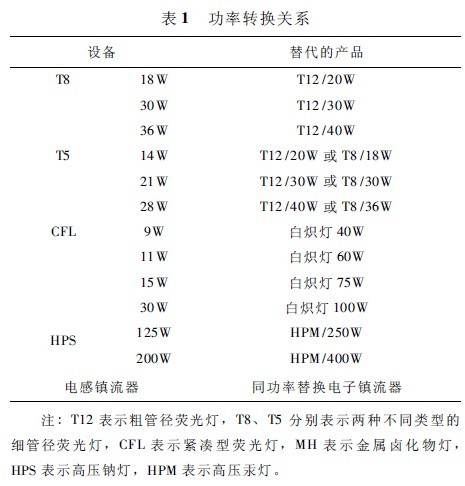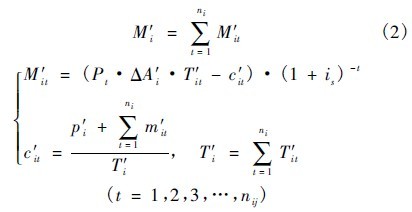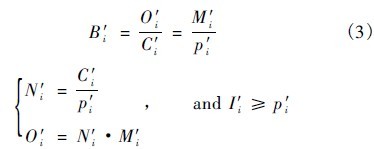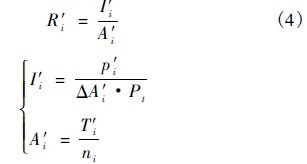1 Introduction
The Chinese government regards "constructing a resource-conserving and environment-friendly society" as a basic national policy, marking the period when China entered a period of building a conservation-oriented society. Many users timely reduced the lighting equipment. However, according to the survey, many lighting and energy-saving renovation projects have seen the phenomenon of saving electricity and not saving money. The reason is that the quality of lighting equipment on the market is uneven, but it is because the users did not carry out the festival. The electric benefit calculation will blindly carry out energy-saving renovation of lighting.
Therefore, users should analyze the expected effects of the energy-saving retrofit program from an economic perspective. The economic analysis of the energy-saving retrofit plan is to calculate, analyze and evaluate the economic effects of different energy-saving retrofit programs, so as to select the optimal solution. The commonly used methods for judging the economics of lighting energy-saving schemes are the cost method, the investment capability method and the net present value method. (1) The cost method is aimed at pursuing the minimum discounted cost and is applicable to the comparative evaluation of multiple schemes with different service life. (2) Investment capacity method evaluates the recovery effect of investment, and the rate of investment recovery is visually seen through the investment recovery period. (3) The net present value method evaluates short-term defined investment projects through the discount rate of costs. However, the cost method cannot see the speed of investment recovery. The investment ability method does not take into account the discount rate of benefits. The net present value method makes the investment expectation and the actual result greatly deviate, that is, the three methods have their own applications. limit. This paper considers the combination of the three methods, and promotes the strengths and avoids shortcomings. The economic evaluation is carried out by introducing the three ratios of benefit ratio, relative investment recovery period and relative remaining time, and then the optimal power saving transformation scheme is obtained.
2 Transformation principle
Lighting equipment is mainly divided into: incandescent lamps, fluorescent lamps (T12 / T8 / T5 / compact fluorescent lamps), high pressure mercury lamps, high pressure sodium lamps (HPS), metal halide lamps (MH). Ballasts include electronic ballasts and magnetic ballasts. Most users consume electricity in indoor fluorescent lighting. Therefore, this paper mainly analyzes fluorescent lamps as the object, and establishes economic evaluation by introducing four factors such as price, power, life and annual running time to obtain the optimal power saving transformation. Program. The above four factors are common features of lighting equipment. Therefore, based on the economical evaluation of fluorescent lamps, the paper can be applied to other lighting equipment such as metal halide lamps, high pressure sodium lamps and high pressure mercury lamps.
In general, the funds used by users for retrofitting are limited, so it is impossible to carry out energy-saving retrofits for all lighting equipment. Therefore, this paper introduces the adaptation principle of adaptation to select the optimal power-saving scheme. The transformation principle is set as follows:
1 The equipment's benefit ratio is greater than 0 to allow for retrofitting. If the benefit ratio of energy-saving equipment is greater, reflecting the greater the power-saving benefits generated, the more priority should be given to the transformation. Therefore, according to the principle of “from big to smallâ€, the benefit ratio is sorted. According to the benefit ratio, the optimal brand of each equipment and the transformation order of each equipment can be obtained.
2 If the maximum benefit ratio exists in different equipment, the equipment with the smallest investment recovery period is prioritized. The smaller the relative investment payback period, the shorter the time to recover the unit investment cost. Therefore, the relative investment payback period is sorted according to the principle of “small to largeâ€.
3 If the maximum benefit ratio and the minimum relative investment payback period are stored in different equipment at the same time, the equipment has the same transformation priority. On this basis, the specific object of the transformation is determined according to the relative remaining time of the equipment. The smaller the relative remaining time of a device in a certain area, the shorter the available days, and the more likely it is to be scrapped, and the priority should be modified.
As can be seen from the above, the relationship between the benefit ratio, the relative investment payback period, and the relative remaining time is affiliation. The benefit ratio has the highest priority, and the priority of the payback period is second, and the priority of the remaining time is the smallest. If the benefit ratio of equipment A is greater than equipment B, then even if the relative investment payback period of equipment B is less than equipment A, only equipment A should be prioritized. Similarly, if the relative payback period of device A is less than device B, then even if device B's relative remaining time is less than device A, only device A should be prioritized.
3 Lighting renovation plan based on economic evaluation
3. 1 power saving benefits
This paper defines that, under the condition of constant luminous flux, equipment that can save electricity compared to current lighting equipment is collectively referred to as lighting energy-saving equipment. Through the power conversion relationship between the lighting energy-saving equipment and the current lighting equipment, the power saving is obtained, thereby obtaining the power-saving benefit of the lighting power-saving transformation.
(1) Power conversion relationship of lighting equipment (see Table 1)

According to the power conversion relationship, the power consumption saved by the energy-saving device compared to the current device under the condition that the luminous flux is constant can be obtained.
(2) Power saving
Where ΔA'i ———the amount of electricity saved per unit hour after the replacement of the i-th lighting device;
Ai———The unit hourly power consumption of Class I lighting equipment;
A'i ———The unit hour power consumption of the i-th lighting equipment replaced by the energy-saving equipment under the condition of the same luminous flux, that is, the unit hour power consumption of the energy-saving equipment;
M—the total number of lighting devices to be replaced.
After receiving the electricity saving, the electricity saving benefit is calculated according to the electricity price, the investment cost, the loss rate and the service life, and then the modification is determined according to the size.
(3) Power saving benefits of unit lighting energy-saving equipment
The electricity saving benefit of the t-th year after the replacement of the i-th lighting equipment is the present value of the electricity saving fee in the t-th year after deducting the investment cost of the t-year:

Where, M'i ——— the current value of the total amount of electricity saved after the replacement of the i-th lighting device, in units of yuan;
M'it—the present value of the annual revenue of the electricity in the t-year after the replacement of the i-th lighting equipment, in units of yuan;
Pt—the electricity price for the t-year, in yuan/( kW·h);
C'it—the investment cost assessed in the t-th year after the replacement of the i-th lighting equipment;
T'it—the operating time of the t-th year after the replacement of the i-th lighting equipment, and the future annual running time should be based on the previous year data;
Pi———the purchase price of the i-th lighting equipment;
P'i—the replacement cost of Class I lighting equipment, the cost of purchasing lighting energy-saving equipment;
M'it—the maintenance cost of the t-th year after the replacement of the i-th lighting equipment, which can be regarded as a fixed value;
Ti———the service life of Class I lighting equipment;
T'i ———the service life of lighting energy-saving equipment;
Is———the discount rate;
Ni———The total number of years of use of the i-th lighting device after it has been replaced.
In order to simplify the process, only the purchase cost of the lighting energy-saving equipment is considered, and the maintenance cost of the lighting energy-saving equipment is not considered. Assume that the annual operating time before and after the equipment transformation is constant and the electricity price is always 1 yuan / kWh. And the total breakage rate (ie the average inflation rate) is 10%.
1 When the lighting equipment of different power is replaced, the power saving benefit is

For example, the T8 /18W has a service life of 10,000 hours and its purchase price is $10. When T8 /18W replaces T12 /20W, the power saving benefits are:

2 When replacing equipment of the same power, the power saving benefits are:

3. 2 Economic evaluation based on power saving benefits
According to the power saving benefit of the energy-saving equipment, the benefit ratio of each energy-saving equipment is obtained, and the objects to be modified are sequentially sorted. The benefit ratio is the ratio of total benefit to total investment. If the efficiency ratio of the equipment is greater, the priority should be changed.

Where B'i is the benefit ratio;
O'i ———Total benefit;
C'i — indicates the total cost. Since the maintenance cost of the energy-saving equipment is not considered, the total cost is equal to the cost of purchasing the lighting energy-saving equipment;
N'i ———The number of purchases of energy-saving equipment.
After obtaining the benefit ratio of each energy-saving equipment, in order to solve the problem that the maximum benefit ratio exists in different energy-saving equipment, this paper introduces a relative investment recovery period. The relative investment payback period can be obtained from the annual running time and service life of the lighting energy-saving equipment.

In the formula, I'i ——— the investment recovery period, the unit is hour;
R'i ——— Relative investment payback period, which is the ratio of the investment payback period to the annual average running time, in units of years;
A'i ———Average running time, the unit is the total number of hours of operation per year of energy-saving equipment. Since the equipment runs at the same time each year, the annual average running time is equal to the running time of each year, then T'it = Ai = A'i
After obtaining the benefit ratio and the relative investment recovery period, this paper introduces the relative remaining time indicators to solve the problem of how to determine the lighting equipment transformation area. It is the ratio of the remaining life of a Class I lighting device to its average annual operating time.

Where, Rij—the relative remaining time of the i-th lighting device in the j-th zone;
Ti———the service life of Class I lighting equipment;
Tij—the elapsed time of the i-th lighting device in the j-th zone;
Aij——— Indicates the annual usage time of the i-th lighting equipment in the j-th area, in the total number of hours of operation per year.